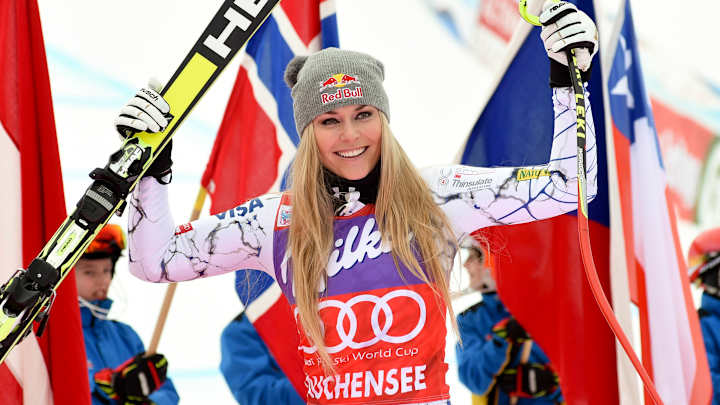Skiing seeks new fans, better TV product with 2-run downhill

GENEVA (AP) Chasing the record for ski World Cup wins next season, Lindsey Vonn will have another chance to master a rare race challenge: A two-run downhill.
The International Ski Federation (FIS) has scheduled a double downhill - two runs down a shorter course - just before the Olympics to test a fresh format in a prime Saturday slot.
''This has an interesting potential which we would like to check a little bit,'' the FIS women's race director Atle Skaardal told The Associated Press.
The FIS is following a trend in sports of using pepped-up, shorter formats to lure new fans, while also keeping regular TV viewers watching for longer.
Currently, a World Cup downhill sends top racers down as the first 20 starters in about 45 minutes of TV airtime. The eventual winner can wear No. 1, but often not knowing if their run will be good enough for victory.
''We know we have a certain problem with the classical downhill in terms of the television production to keep the excitement until the race is over,'' Skaardal acknowledged in a telephone interview.
A two-run downhill is like a slalom or giant slalom. The 30 fastest racers in the first run go in reverse order for the second run which starts about two hours later. The first-run leader is last to go as the tension builds.
''Then the winner is clear,'' Skaardal said. ''You don't have this uncertainty.''
Vonn should be happy with the revamped race scheduled at Garmisch-Partenkirschen, Germany, on Feb. 3, just days before heading to the 2018 Olympics at Pyeongchang, South Korea.
In January 2016, Vonn won a two-run downhill, the first to have been raced in more than a decade. It was her record-tying 36th win in a World Cup downhill, taking her closer to Ingemar Stenmark's all-time mark of 86 wins in all disciplines. The 32-year-old Vonn has 77 wins going into next season.
On that day in Altenmarkt, Austria, the lack of snow forced race organizers to get creative. Now, the FIS is choosing to explore ways of showcasing Alpine skiing.
The mostly unloved Alpine combined event should be gone by 2020. It has been good for Vonn's American team, giving first Olympic titles for Bode Miller and Ted Ligety, in 2010 and 2006, respectively.
More parallel slalom events are planned, in which two skiers compete head-to-head on adjoining courses.
''It's about delivering a product that we think could be attractive in the future,'' said Skaardal, suggesting individual parallel slalom could be an Olympic event at the 2022 Beijing Winter Games.
The classic downhill is not under threat, though a successful two-run downhill trial at Garmisch could put the secondary speed discipline - the super-G - under pressure.
''Obviously I am a big fan of super-G,'' said Skaardal, a two-time world championship gold medalist in the discipline that challenges racers to adapt quickly through an unfamiliar course setting without a prior training run.
''But for every event we just need to have it performing according to expectations.''
